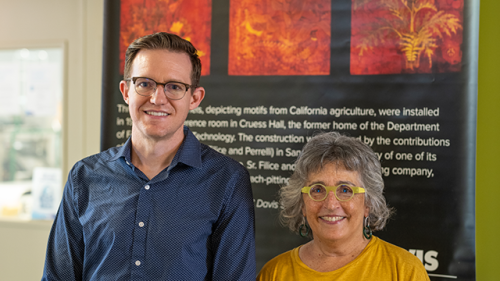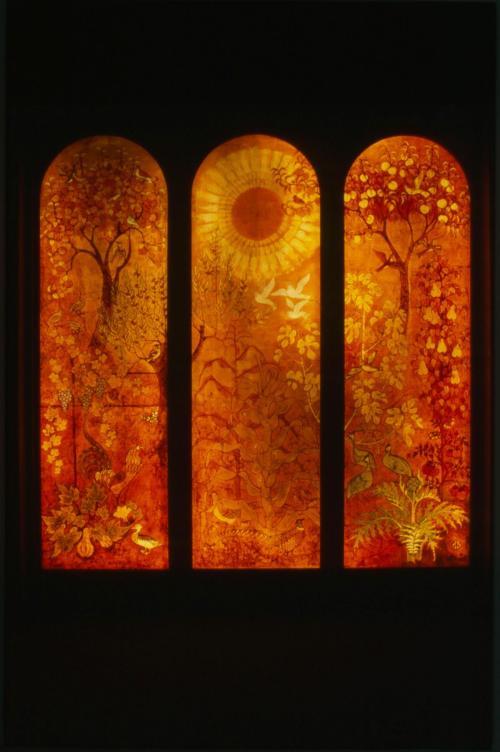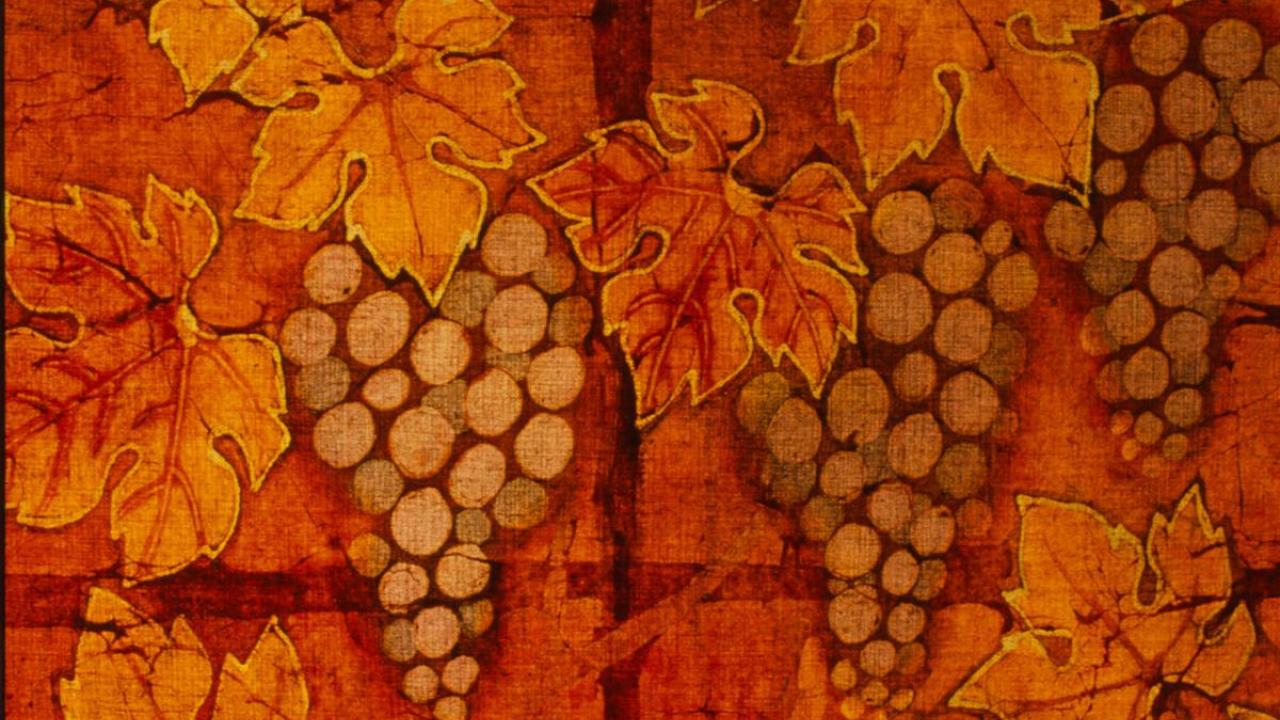Peaches, grapes, tomatoes and olives — some of California’s specialty crops that have been the subject of numerous research projects at UC Davis — are also a prominent feature in a colorful art display at the home of the Department of Food Science and Technology.
“It’s wonderful to be able to revive some of this artwork and bring a piece of our department history to the forefront.” — Christopher Simmons

A large vinyl display was recently unveiled in the Robert Mondavi Institute complex. It was created using images of three historical batik cloth panels that depict California agricultural motifs.
The original artwork was installed in 1968 in the “Filper Room,” a conference room and lounge in Cruess Hall, the previous home of the department before moving to RMI in 2008. The eight-foot-tall batik art panels, through which filtered sunlight entered the room, were donated by the Filper Corporation. The company, whose founders worked in the canning industry, developed peach-pitting equipment, including a mechanical peach pitter.
Zann Gates, a publications and productions specialist with food science and technology, has worked with the department since 2007 and helped coordinate efforts to get the new display made.
“I have memories of seeing the panels in their original installation,” Gates said. “To me, they’ve always seemed very evocative of the late 1960s in their form and colors and material, in addition to their depiction of local agriculture through art. I’ve wanted to ‘rescue’ them for years.”

Gates, along with Christopher Simmons, department chair and professor, recently installed the display on a wall near the California Processing Tomato Industry Pilot Plant, where canning work is done today.
Batik is a technique that uses wax and dye to create designs on fabric. The original batik panels still exist, but years of sunlight have eroded the material. Photos taken at the time of the initial installation have been kept courtesy of UC Davis Special Collections and can be viewed in an online gallery on the Department of Food Science and Technology website. The gallery includes images of the art, as well as a handwritten letter signed by the artist. Gates said with the help of her friend Gretchen Steinberg, president of non-profit organization Sacramento Modern which works to preserve and protect local art, architecture and design, they were able to determine that the artist was Monica Hannasch. The artwork features red, orange and yellow hues to depict a sunny outdoor scene with several California crops, as well as birds and trees.
Simmons said the display highlights not only the work of the department, but the collaboration the university has had with the Filper Corporation and other companies in the canning industry.
“It’s always nice when art intersects with the department’s research and educational activities,” Simmons said. “Our department has worked closely with the industry in the area of canning, conducting research to identify optimal canning conditions and characterize shelf life with respect to food safety and quality.”
Simmons hopes the new display will help draw attention to the long-standing tradition of industry collaboration with the department, as well as provide a cheerful scene that gives a sampling of crops that were relevant in the 1950s and 1960s and continue to be important today.
“Food is so universally relevant. It’s something that every person has a biological and emotional connection to,” Simmons said. “This wonderful art helps to both enrich our facilities and our experiences as food scientists and celebrates food for the amazing, vital, cultural material that it is.”
Original story is available here.
Media Resources
- Christopher Simmons, Department of Food Science and Technology, cwsimmons@ucdavis.edu
- Zann Gates, Department of Food Science and Technology, zgates@ucdavis.edu
- Tiffany Dobbyn, College of Agricultural and Environmental Sciences, tadobbyn@ucdavis.edu
